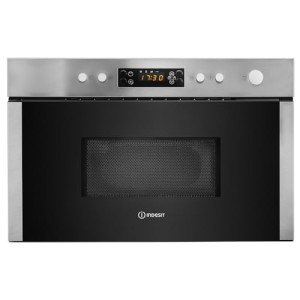관련뉴스
전문가들이 제공하는 다양한 정보
15 Best Built In Microwave Oven Bloggers You Need To Follow
작성자 작성자 Richelle · 작성일 작성일24-11-27 03:27 · 조회수 조회수 3
페이지 정보
본문
 Benefits of a Best Built In Microwave Oven in Microwave Oven
Benefits of a Best Built In Microwave Oven in Microwave OvenInstalling a built-in microwave oven in your cabinets will give you an attractive look without the need for a complete kitchen renovation. They are available in a variety of installation styles to match your cabinet space.
A lot of microwaves built-in come with a variety of control options that include shortcut buttons that are pre-programmed for common foods. They also feature metal boxes that stop harmful microwaves from escaping.
Size
Microwaves are a must-have appliance in any kitchen. They come in different sizes and designs to suit your kitchen's space and requirements. The main decision is whether to select a countertop or freestanding microwave.
There are a few major differences between the two models that you should be aware of. The primary difference is that a microwave built-in requires professional installation, which can be an additional cost. It also means that it's more difficult to move or replace should you ever decide to change your microwave.
Freestanding models offer you more freedom in the choice of where to place your microwave. This is especially beneficial when your kitchen is small or you don't have much wall space for the microwave.
Built in microwaves can be placed in the cabinetry or under the counter for a sleek, double integrated oven with microwave look. They can assist in reducing countertop space and cook at eye level to speed up the cooking process.
When choosing a built-in microwave, it is important to take into consideration the size, power level and style. Choose a microwave with an impressive wattage so that it is able to cook food quickly and evenly. Microwaves that have smaller watts are less effective at heating your food. You should avoid buying a model that has less than 800 watts in order to avoid burning or undercooking your food.
It is also important to determine the dimensions of your cabinet to ensure a built-in microwave can fit. Choose a countertop model that fits into a recessed area, or a larger model that can fit in an existing hole in your cabinetry. Some built-in microwaves can be transformed into a freestanding unit with the help of an optional kit. However, this may not be the ideal choice for your kitchen as it will require venting and may be difficult to remove or replace later on down the line.
Convenience
A microwave with built-in oven is an excellent kitchen appliance for those who are looking to avoid the hassle and clutter of a freestanding model. It can be easily integrated microwave into the kitchen design to give it a more sophisticated look and elevating the aesthetics of your kitchen. It can also be placed at eye level to make it easier for you to reach and use, without having to bend or lean over. A built-in microwave can also be positioned under the counter or inside cabinets, which will save you even more space.
Microwave ovens are available in a range of sizes and styles, with a variety of styles and finishes to choose from. There are also models that are designed to complement the other appliances in your kitchen which allows you to create an overall look that matches your kitchen style. Moreover most modern microwaves come equipped with different options for controlling the microwave that allow you to cook food with a few simple presses.
A microwave with a built-in oven is not just practical, but it can also save you space on your counter. This can be useful when you are working with a small workspace or counter space. There are models that can be wall-mounted or under the counter and you can choose between various door options. Certain microwaves, like come with doors that swings out from left to right. Others come with a drop-down door that opens like a drawer.
Based on your cooking preferences You can also pick from a range of power levels for your microwave oven. If you plan to use it to reheat food, you might want to choose a lower-powered microwave, but if you intend to grill or bake or bake, you should opt for the highest-powered model.
A built-in microwave is not just practical, but it can also be an excellent investment for those looking to renovate their kitchens or have a new kitchen installed. A built-in microwave is more expensive than a countertop model that can be purchased at any retail store.
Design
Built in built oven and microwave microwaves offer seamless design in your kitchen and allow them to blend seamlessly into your cabinetry. They're becoming more popular as an alternative to a freestanding model, especially because they help you reduce counter space and create a unique design that connects the cabinets and appliances. They come in a variety of styles to match your kitchen's aesthetics and style. They are available in black, white or stainless steel finishes. Some models also include an installation that flushes to be flush with standard cabinet depths, ensuring they fit in even more effortlessly.
It is crucial to consider the power, size and features of a built-in microwave in order to ensure that it is compatible with your kitchen. Also, take into consideration how often you'll use the pre-programmed functions such as defrost settings and sensors cooking features. Additionally, you'll want to decide if you prefer a conventional microwave or a convection model. Convection models are more efficient than conventional models, which use electromagnetic radiation to cook food. Some models come with broiling functions to brown or crisp food in the oven. In addition, you'll need to look at the overall structure of the microwave to determine how it's built to last.
Safety
Microwave ovens come with many safety features to protect both you and the appliance. These include locks for children and automatic shut-off, overheating protection, and door interlock systems. They also have ventilation holes to stop overheating and make sure that microwave energy does not escape from the oven. The door of most built-in microwaves integrated has a window so you can see your food. However it is not advised to put your face against the door when the appliance is on.
One of the most common fears people have about microwave ovens is that they emit radiation, which causes cancer or other health issues. Although microwaves can produce electromagnetic radiation, this is not the same as nuclear radiation. In fact, John Drengenberg, Consumer Safety Director at UL states that there are very few instances where people have been injured by microwaves.
Drengenberg claims that the majority of risk that microwaves pose are due to improper usage, and not radiation. For instance, you should never activate the microwave while it is empty since this can damage the magnetron, which could cause the ignition of a fire. It is crucial to follow the directions in the user's manual from the manufacturer and to not try to modify or adjust the microwave yourself.
Another risk associated with microwaves is that they may generate sparks when metallic objects are inserted in them. This is due to the fact that the metal that is electrically conductive, acts as an antenna and generates an electric current. The sparks can then travel to the interior of the oven, which can cause a fire.
It is recommended to only microwave glass and ceramic dishes to avoid this. Use only metal cookware which is microwave-safe, such as stainless or tin plated iron.
 After each use, clean your microwave, as spills can seep in to the seal and let the microwave's energy to escape. It is also important to ensure that the latches and hinges on the oven are secure, and that there are no cracks or other damages to the external or internal surfaces of the microwave.
After each use, clean your microwave, as spills can seep in to the seal and let the microwave's energy to escape. It is also important to ensure that the latches and hinges on the oven are secure, and that there are no cracks or other damages to the external or internal surfaces of the microwave.- 이전글Title: The Importance of Maintaining Routine for Alzheimer's Patients: Practical Tips for Senior Care 24.11.27
- 다음글Demo Wild Bison Charge Bisa Beli Scatter 24.11.27
댓글목록
등록된 댓글이 없습니다.


